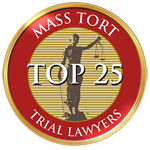How Intentional Torts Impact Malpractice Cases
An intentional tort may lead to economic, emotional, or physical harm. It is the result of a deliberate action on the part of the person causing the harm. Although it is rare for there to be an intentional tort as the basis of a medical malpractice case, there are times when a person may bring a malpractice action against a medical professional who deliberately caused harm.
There are many times when a person is injured because of negligence of a doctor, nurse or other healthcare provider. In most cases, these mistakes are inadvertent rather than intentional. However, there are times when the mistake that was made was the result of reckless behavior where the person making the mistake did not care whether or not his or her actions led to harm. In certain, albeit relatively rare, cases, the person may have committed an intentional act meant to lead to injury in another person. This is referred to as an intentional tort.
Intentional Versus Reckless Torts
Intentional torts may be charged as crimes and prosecuted by municipal, state, or federal attorneys.
Some of the common criminal charges relating to an intentional tort that leads to physical or emotional harm include:
- Assault and battery;
- Intentional infliction of emotional distress; and
- Homicide.
When there is alleged to have been an intentional tort, it is necessary for the person bringing the action to prove that the defendant possessed an intent to carry out the action that led to the harm. It is not necessary to show that the person intended to inflict an actual injury. In order to prevail in a case based on an intentional tort, it must be shown that the injury was substantially certain to result from the actions of the defendant. If there was some element of uncertainty, then it is more likely than not that a cause of action based on a theory of recklessness would be the best choice.
When a person is injured because of the actions of a medical professional, a malpractice case often is brought based on a theory of negligence, which means that the healthcare professional made a mistake, but that it was not intentional or the result of an intent to do harm. However, it may be possible to demonstrate that a doctor was acting in such a manner as to cause harm to another person, such as a co-worker, which led to an injury to a patient. In a case like this, the medical professional intended to cause harm to one person and the intent was transferred to the person who actually was injured. Criminal charges likely would be brought against the healthcare provider in this case, but it also might be possible to bring a civil action to recover monetary damages for the harm that was caused.
In other cases, there may have been such a reckless disregard for the potential to cause harm to a patient that it is possible to hold the doctor liable because he committed a reckless tort. An example of this might involve a doctor who has a surgery scheduled who goes to a bar several hours prior to the surgery and consumes multiple alcoholic beverages. When the doctor operates on a patient and causes an injury, it is clear that the actions of the doctor support the argument that the doctor knew that there was a significant likelihood that operating on a person while under the influence of alcohol carried a great risk of doing harm, but was reckless in his disregard for the potential for injury.
Vicarious Liability and Negligent, Reckless, or Intentional Torts
In some cases, it may be possible to hold a hospital vicariously liable for the harm that was caused by a medical professional who acted in a negligent manner and caused harm to another person. In those cases where a hospital had direct oversight or authority over the actions of a doctor, nurse, or other medical professional and failed to take actions to prevent the harm that was done to a patient, then it may be possible to bring an additional action against the facility. There are specific criteria that must be met in order to succeed in this type of action, including demonstrating that the medical professional was an employee of the facility or was acting under the authority of the facility, showing that the harm was done during activities that fell within the normal scope of the medical professional’s duties, and proving that the facility should have been able to take steps to prevent the harm that was done. Vicarious liability against a hospital or other healthcare facility is not possible when the medical professional committed an intentional or reckless tort.
Stern Law, PLLC Develops Effective Litigation Strategies
It often is unclear how a particular injury resulted from the negligence of a medical professional and those who were harmed frequently have many questions about how civil and criminal cases might be brought against a healthcare provider who caused serious harm. At Stern Law, PLLC, our attorney has more than 30 years of experience in advocating for the rights and interests of our clients and we ensure that everyone has the information that he or she needs before moving forward with a legal case. We also have compassionate and committed staff available to answer any questions relating to medical malpractice 24 hours a day, seven days a week. Call us at 1-844-808-7529 or fill out an online contact form in order to learn how we can help you get through this difficult time.













